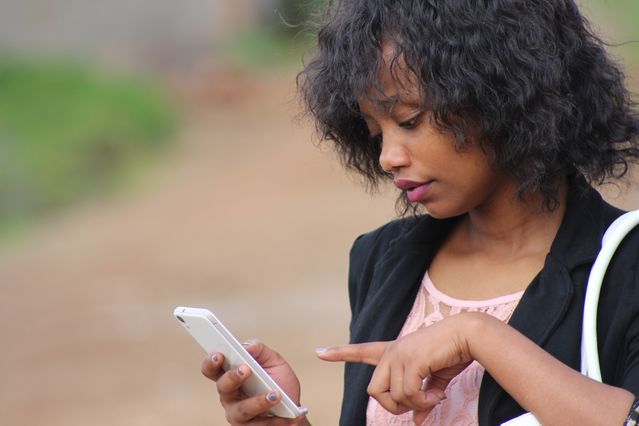
Trauma
Taking Care of Yourself and Others During Racial Trauma
A guide for healing in the face of race-based turmoil.
Posted August 16, 2017
The violent and racist attacks that recently occurred in Charlottesville, VA and many others that preceded them like those marked by police brutality and more historical racial animosity, typically generates one of three reactions from the American public. People either jump to action to advocate against racial injustices, they feel helpless and immobilized by it, or they experience racial apathy. As a nation that believes that its values of racial harmony are upheld by most of the continental U.S., many were disturbed to see acts of race-based intimidation, violence, and murder happening on U.S. soil, in 2017. And during the Charlottesville events the impact has seemed more widespread across racial lines.
Whatever way people have chosen to cope with the circumstances surrounding the current racial climate in the U.S., one thing is for sure; the hate crimes and the accompanying images being transmitted through social mediums have an effect on the emotional well-being of people nationwide. For some, it is likely to have a very negative and possibly traumatic effect.

So What Do We Do Now?
1. Be Motivated to Organize and Mobilize
Traumatic events that are framed around racist acts, whether experienced personally or remotely, have the capacity to debilitate people emotionally and push them into a state of dissociation, helplessness, and inaction. One way to reestablish your mental power, and that of the communities impacted by racism, is to “do something,” as opposed to nothing. In the aftermath of Charlottesville, the general public is likely to retract back to their daily agendas and forget about the racial tensions that are alive in this nation. So it is important to keep in mind that developing racial apathy as the days go by is more and more likely. It’s important to also know that whatever it is that you choose to do to combat racial injustices and ideologies does matter, because when everyone contributes something, it can create a snowball effect of action. Jumping to action also helps a person to feel less disempowered and helpless. So instead of developing an indifference for the recent racial violence, instead seek out ways to mobilize.
The Southern Poverty Law Center (SPLC) recently released a community response guide that helps educate people on how to fight hate. The 10 ways listed are the following:
- Act - Do Something.
- Join Forces - Create a diverse coalition.
- Support the Victims/Survivors - Hate crime victims/survivors are especially vulnerable.
- Speak Up - Help news organizations achieve balance and depth.
- Educate Yourself - Understand the difference between a hate crime and a bias incident.
- Create an Alternative - Do not attend a hate rally.
- Pressure Leaders - Elected officials and other community leaders can be important allies.
- Stay Engaged - Promote acceptance and address bias before another hate crime can occur.
- Teach Acceptance - Bias is learned early, often at home. Schools and parents can offer lessons of tolerance and acceptance.
- Dig Deeper - Look inside yourself for biases and stereotypes.
For a more comprehensive look at SPLC’s 10 Ways to Fight Hate, check out their manual.
2. Prioritize Self-Care
Everyone involved in social justice advocacy can use a reboot from time to time. So whether you’re newly thinking about how to advocate against racial injustices, or if you’re a seasoned advocate, it’s important to understand what self-care practices work well for you and to set aside chunks of time dedicated to just that. Remember that you matter and you have to self-preserve to fight injustice or to simply exist in peace.
For Black and Brown people who could use some guidance on how to improve your self-care practices, Clinical Psychologists and Associate Professors Dr. Hector Y. Adames and Dr. Nayeli Y. Chavez-Dueñas, Co-Directors the IC-RACE Lab (Immigration, Critical Race, And Cultural Equity), have created an extensive guide, “Surviving & Resisting Hate: A Toolkit for People of Color,” which can be found here. The first recommendation in the guide is to “Stay physically and psychologically healty.” Self-care matters.
3. Mental Health Practitioners: Become Equipped with Knowledge on Racial Trauma
Mental Health Clinicians are oftentimes at the forefront of the public’s traumatic reactions to racial injustices. We can help individuals within our respective practices by becoming engaged in gaining awareness, knowledge, and skills on how to properly address race-based trauma within the communities we serve. The APA website, and specifically the APA’s Division 45 (The Society for the Psychological Study of Culture, Ethnicity, and Race) and Division 17 (The Society of Counseling Psychology), offer a wealth of resources on understanding the psychological and physiological components of racism and discrimination. We can also seek to attend educative spaces that offer an environment that is rich in context around healing in the face of racial trauma. Recently, the Division 45 president, Dr. Helen Neville and her conference co-chairs, Drs. Chavez-Dueñas and Adames, called to action a division conference theme initiative for the upcoming APA 2018 conference, entitled Radical Healing, which will help produce sessions and events where psychologists can gain further knowledge on how to be better equipped to transmit healing to communities impacted by the culmination of racial animosity experienced in the U.S..
4. Talk to Children About Race and Racism
Children are not immune to the racial violence that occurs nationwide, so be sure to help verbalize the experience with them. Children are an especially vulnerable population, as they are in the process of framing their racial identity and what it means to be a racial being. The American Psychological Association’s Public Interest Directorate recently produced a guide for talking to children about race, called “RESilience: Uplifting Youth Through Healthy Communication About Race” that offers recommendations on how to frame the conversation on race with children. You can also find some information on RESilience in a recent article on Psychology Today by Erlanger A. Turner, Ph.D..
5. Check In On the People Close to You
Social media has been flooded with people stating how emotionally overcome they are by the intensity of the white nationalist race crimes they’ve been exposed to via Charlottesville. While some are vocal about their reactions, there may be some that haven’t had the words to express their concern or even their trauma. So while you’re working on making sure you’re doing ok, also take the time to check in on a friend, family member, colleague, or children that you know. Take into account people can very well be survivors of racial violence, either because they’ve lived in another generation (i.e. older generations that lived through the Jim Crow era) or because they’ve lived through racial animosity more presently. Either way, a check-in can be needed for many right now.
Lastly, let’s ensure that we are collectively taking care of each other and ourselves. Our minds, bodies, and nation are counting on it.
References
Adames, H.Y., & Chavez-Dueñas, N.Y. (2017). Surviving & Resisting Hate: A Toolkit for People of Color. Retrieved from https://drive.google.com/file/d/0B-nj4wfR3762NnhpWjBQN3hmTkE/view?usp=s…
American Psychological Association Public Interest Directorate. (2017). RESilience: Uplifting youth through healthy communication about race. Retrieved from http://www.apa.org/pi/res/?tab=2
Pieterse, A. L., Todd, N. R., Neville, H. A., & Carter, R. T. (2012). Perceived racism and mental health among Black American adults: A meta-analytic review. Journal of Counseling Psychology, 59(1), 1-9.
Southern Poverty Law Center. (2017). Ten ways to fight hate: A community response guide. Retrieved from https://www.splcenter.org/20170814/ten-ways-fight-hate-community-respon…



